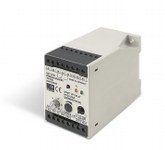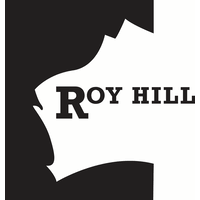Do You Have A Project We Can Help With?
Electronic Speed Monitor EDO

APPLICATION
The electronic speed monitor relay EDO is used in connection with a pulse sensor to monitor the rotational speed and standstill of drives.
Pulse sensors according to NAMUR EN 50227 as well as 3-wiresensors can be connected to the EDO relay. The pulse output is fed to the speed monitor relay where the pulse frequency is compared with the frequency set by the control of the relay. When the input frequency passes the set frequency the internal output relay is switched.
Warning or control equipment can be connected to this output relay and operate when the speed either increases or decreases from the setpoint.
The new multi-layer contact of the output relay improves the true operation of the contact in a wide range up to 5 A and 250 V. The operation of the relay can be inhibited during start-up of the monitored drive by adjusting the start-up potentiometer to the time taken for the drive to reach operating speed.
Options
• A special design is available to meet requirements where the speed monitor unit should be installed close to the monitored drive and its pulse sensor.
The design consists of speed monitor relay EDO being installed in a plastic housing, of IP 65 protection. The true operation of the device can be readily observed through the transparent cover of the plastic housing.
The features of this arrangement are:
– Shortened length of screened cable between pulse sensor and relay adjustment at commisioning with visual contact to the drive.
– The output signal of the relay can be interference free transmitted to the control equipment without using the screened cable.
• A feature of the Kiepe speed monitor relays is that any number of speed monitors can be connected to only one transducer. The pre-set trip points of the individual speed monitor relays can be varied.
OPERATING PRINCIPLE
The circuit arrangements of the speed monitor relay EDO makes use of the advantages of digital pulse input. There are no time lags normally encountered with analog devices. The unit compares the time between successive input pulses and its preset frequency.
Differences result in immediate switch-off of the output relay. The output relay will switch, too, if the connected pulse sensor becomes damaged or the power supply fails.
TECHNICAL DATA
Device complies with: EN 50178-94; EN 50081-1; EN 50082-2
Operating principles: Under speed, slip, standstill or over speed monitoring.
Mechanical: Relay casing with front terminals. Two PCB´s direct soldered to the front terminals.
Actuating supply voltage: AC 230 V, 50 … 60 cyc., (Other voltages by request).
Voltage tolerance: ±10 %
Power consumption: Approx. 3 VA
Ambient temperature: – 20 °C … + 55 °C
Storage temperature: – 30 °C … + 70 °C
Trip point accuracy: < 1 % (at constant ambient temperature)
Reset differential: 10 % at pre-set speed. Can be altered by means of an internal potentiometer to between 3 … 30 %.
Pulse duration: ≥2 ms
Start-up delay: 0 – 40 sec. adjust ability
Protection: Case IP 30, terminals IP 20 according to EN 60529
Mounting contact: Vertical (please refer to dimensions)
Output contact: 1 single pole changeover contact
OPERATIONS
EDO used as underspeed or standstill monitor with start-up delay
The internal output relay will be energized and the green LED will be lit until the start-up delay is completed (contact 15 – 18 closed). The relay will be cut off if the operating speed is below the set point and the start-up delay is completed (contact 15 – 16 closed).
EDO used as overspeed (maximum speed) monitor without start-up delay
Move the internal slide switch from position 1 to 2. In this operating mode the unit reacts when the pre-set speed is exceeded, without locking on. The output relay de-energizes, and the green LED goes out. Failure of pulses are not signalled. If this is required, then model EDO should be used.






